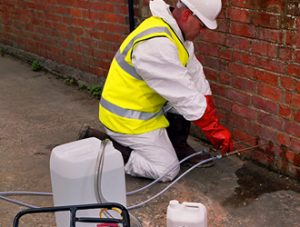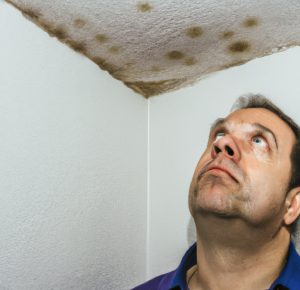The Selkent Trust now officially recognise Rochester Building and Damp to be Medway’s premier independent timber and damp business.
Although The Selkent Trust are responsible for many historic properties around South East London and Kent, they also have dozens of buildings situated along coastal regions such as Whitstable, Folkstone, Hastings and Brighton.
It’s worth noting, the U.K. has a large number of properties located in close proximity to the coast. These properties can be highly desirable due to their beautiful surroundings and stunning sea views, but they are also highly susceptible to damp problems. In this essay, we will explore the different types of damp that affect UK properties located near the coast, and the factors that contribute to their occurrence. One of the main types of damp that affects coastal properties is rising damp. Rising damp occurs when moisture from the ground seeps up into the walls of a building. This is a common problem in properties located close to the coast because the ground is often saturated with water, which makes it more difficult for moisture to evaporate. Additionally, many coastal properties are built on a slope, which can exacerbate the problem by causing water to flow towards the building.
Another type of damp that affects coastal properties is penetrating damp. Penetrating damp occurs when water enters a building through cracks or gaps in the walls or roof. This can be caused by a variety of factors, including heavy rainfall, strong winds, and salt spray. Salt spray is particularly damaging to buildings because it can corrode metal fixtures and fittings, such as roof tiles, gutters, and windows. Condensation is also a major problem for coastal properties. Condensation occurs when warm, moist air comes into contact with a cold surface, such as a window or wall. This can cause water droplets to form, which can lead to damp and mold problems if left untreated. Coastal properties are particularly susceptible to condensation because of the high humidity levels in the air. The sea breeze can bring moisture into the property, and if the property is poorly ventilated, this can lead to condensation problems.
One of the main factors that contribute to damp problems in coastal properties is the weather. The UK coast is known for its wet and windy weather, which can cause significant damage to buildings. Heavy rainfall can cause water to seep into the walls and roof of a building, while strong winds can cause damage to the exterior of the property. Additionally, the sea breeze can bring salt spray and moisture into the property, which can exacerbate damp problems. Another factor that contributes to damp problems in coastal properties is the age of the building. Many coastal properties in the UK are old and have been exposed to the elements for many years. Older properties may have deteriorating roofing materials or porous walls, which can make them more susceptible to damp problems. Furthermore, old buildings may not have adequate ventilation or damp proofing measures, which can make them more vulnerable to rising damp and condensation.
It is also important to consider the location of the property when assessing damp problems. Properties located closer to the sea are more likely to experience damp problems because they are more exposed to the elements. Additionally, properties that are located on a slope or at the bottom of a hill are more likely to experience rising damp because water can flow towards the property. Properties that are located in areas with high humidity levels, such as estuaries, may also be more susceptible to damp problems. To prevent damp problems in coastal properties, it is important to take preventative measures. This may include ensuring that the property has adequate ventilation, installing damp proofing measures, and regularly maintaining the roof and exterior of the building. Additionally, it is important to address any damp problems as soon as they arise. This may involve removing any mold or damp patches, repairing any leaks or cracks in the walls or roof, and using dehumidifiers to reduce humidity levels in the property.
In conclusion, coastal properties in the UK are highly susceptible to damp problems. Rising damp, penetrating damp, and condensation are all common problems that can cause significant damage to buildings. Factors such as the weather, age of the building, and location of the property all contribute to damp problems.















